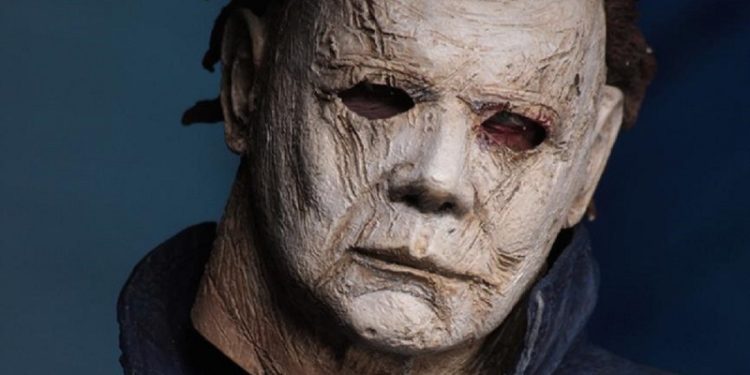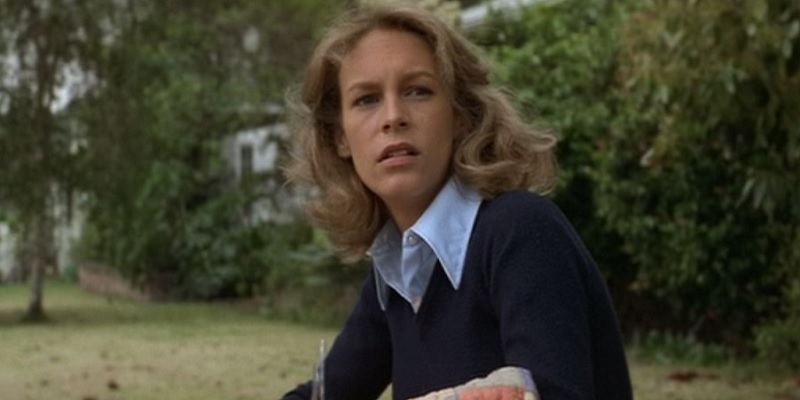Slashers, Cults, and Unseen Terror

When discussing all of the incredible movies coming out in the last quarter of 2018, people continually voice their surprise when I tell them I am looking forward to Halloween (2018) – hereafter referred to as H40 due to release on the 40th anniversary of Halloween (1978), and the previous sequel Halloween H20: 20 Years Later (1998). A lot of people tend to write off horror as a subgenre without merit, including actors who end up going mainstream. I understand someone not watching horror, it’s entire goal is to make you uncomfortable. Now, some people make a distinction between slashers and psychological or surreal horror films. Again, I get it – slashers exist in a weird place – but I think it’s wrong to do. The reason why good horror films work is crucial to understanding storytelling, roleplaying game storytelling included. So, let’s spend a little time discussing slashers, cults, and unseen terror.
Slasher History
Did you really think you’d get out of this article without a brief look at slasher history? If you did, it’s clear this is the first time you have read anything I have written. Slasher films have a fairly sordid history. Films have always had a close link between sex and violence – almost as if human civilization links the two regardless of the medium. While most acknowledge Black Christmas (1974) as the “first slasher,” let’s go back a bit further. Dating back to 1930, we have the Hays Code. This is thanks to films following in the Grand Guignol theater tradition – depicting “naturalistic horror.” The Hays Code sticks around through the late 1960’s, but became increasingly less enforceable over the years. So, we see a glut of horror and creepy films in the early 1900’s, then a period of murder-mystery and murder-revenge genre films through the 1960’s or so.
These films capture a lot of the iconography slashers would rely upon later. We get hidden killers, a focus on the killer’s weapons, the emergence of jump scares, and the burgeoning reliance upon the “final girl,” – though without the sexual weight in the slasher era. We also see an emphasis on people dying as a result of their “dark pasts” or “because they deserve it.” This starts the trend of rooting for specific characters to make it out alive, and rooting for the killer to off as many “deserving” people as possible. However, we eventually make our way to the 60s and things change.
Psycho and Exploitation
By the 60’s, the Hays Code is going through its dying gasps. Psycho (1960) comes along and is scandalous for its time. I mean, this thing is crazy raunchy for its time. An unmarried couple was in bed together. A woman wears a bra on screen. Bates crossdresses and believes himself to be a woman as one of his personalities. A toilet – with toilet paper! – flushes on camera. Oh, then there’s all the stabbing, violence, and blood. As you would expect, none of that is a deal breaker in the states. Go figure. Psycho was a critical and popular darling, earning four Academy Award nominations. This success ushers in an era of violent psychological horror films, each escalating over the last, pushing the envelope a little further. We start to get blood and guts, nudity, mask imagery, and violence in public institutions. It’s easy to see how we go from here to giallo, exploitation, and splatter flicks.
Splatter and exploitation films have a significant influence on the slasher era – albeit the later era of slasher films has a different impact than the early era. Splatter films are pretty self-explanatory – lots and lots of blood and guts. For examples of the genre, Blood Feast (1963) and Twisted Nerve (1968) will do you right. Exploitation films, on the other hand, are all about the sex and violence, revelling in the debauchery of it all. Still, these aren’t without influence. Several exploitation films draw on urban legends, and begin to shift into “true crime”-inspired horror films by the mid-70’s as interest in the genre wanes. We also see a sub-genre of exploitation films hit on holiday-centered time frames that use the film to comment on social issues. While there are several, Black Christmas (1974) is a standout, and later becomes known as the “first slasher.”
Giallo
However, it’s really the Italian giallo films that help shape the future of slasher films. While giallo films are not slashers – normally the story centers on rich, attractive, urbane detective protagonists – a lot of the elements are adopted for use. For example, we get a plethora of killers in masks, El Guapo. Two of the core themes are psychological horror and sexuality. Kills are often set pieces, resulting in memorable, over-the-top kills. “Safe” locations are exploited for their psychological value – nubile young things in a sorority house being punished for misdeeds, for example. Oh, and often the killers or crimes were the work of supernatural forces or dark magic.
Anyway, while this is a rough overview of the period – I am not a film historian by any means – it should easily depict how we get to the slasher golden age in the late-70s and early-80s.
Death Has Come to Your Little Town, Sheriff
In 1978, Halloween changes the landscape. Halloween is not only one of the best slashers or horror films, but one of the best films period. Like Black Christmas before it, it is set on a holiday, and focuses on the illusion of safety and what lurks beneath the surface. Unlike Black Christmas, there is no whodunit element to the film at all. The iconic opening of Halloween has us witness Michael Myers kill his older sister when he was just a child. We know this figure is a killer, but we don’t know why.
Michael Myers is the boogeyman writ large. He stalks through idyllic suburbia with no discernible agenda other than to kill young women. Even his psychologist doesn’t believe he’s much of a person, referring to him as “it” rather than “he.” He’s uncaring, unblinking, and is brutal and vicious in a sudden and immediate fashion. No amount of reason, bargaining, or pleading will save you. Insults receive swift and harsh punishment. He’s the Shape.
Suburban Ranger
Halloween leans heavily on the ideas inherent in suburban life. Danger is something that takes place elsewhere. We leave our children with babysitters to keep them safe. Parents eschew their responsibilities in the film, never calling to check in, nor do we see them mourning their lost children. Reckless behavior such as drinking, aggressively insulting drivers, and ignoring warnings are fine in suburbia, as there are no dangers, right?
While there are myriad discussion points for the film I am not delving into, the core of the horror comes from this juxtaposition of safety and the unknown. We see this same sort of horror carry over to Friday the 13th – kids go to summer camp and no one worries about it – and to Nightmare on Elm Street – our dreams are safe, right?
Halloween III: Season the Witch
Haters gonna hate, but this movie rules. I understand the backlash around it, though. After two movies centering on Michael Myers, the Shape is nowhere to be seen in this one. John Carpenter wasn’t interested in continuing a single story, but believed the potential was there to make an anthology of horror stories all taking place on Halloween. While this might have been true, it’s a bold choice after TWO films centering on Myers, Laurie Strode, and Dr. Loomis. If it had been after the first film? Maybe things would have been different, maybe they wouldn’t have been. It also doesn’t help Halloween III: Season of the Witch (1982) treats the first two as in-world movies instead of either not mentioning them or treating them as real events.
However, the tide is turning on this film, and people are coming around. As an aside, in the LARP I ran with the esteemable Brandes Stoddard, one of the major villains essentially had a Silver Shamrock mask, complete with the insect and snakes bit. No one ever cottoned on because, well, Halloween III. Anyway, Halloween III, uses the same premise for horror that the first does, even though it is not in anyway a slasher. It’s decidedly a cult horror film. After all, the core story revolves around bringing back the age of witchcraft in a celtic ritual that involves the sacrifice of children. Despite this, the themes are the same.
Cults and Whatnot
A cult horror movie focuses on the secrets of your neighbors, a natural progression from the sense of violation of the idyllic in the original Halloween. Gone is the sheen of perfection that exists in the depiction of the suburbs, and what emerges instead a sense of like-minded community. After all, you can’t prevent bad things from outside coming in, but as long as everyone is on the same page, you can defeat it. Your neighbors have their, and by extension your, best interests at heart. You live next to each other, so you being safe means they are safe. That’s the theory, at any rate.
Now, what if that isn’t true? What if your neighbors harbor a dark secret that seeks to destroy your community? Maybe it’s not enough to destroy it, but supplant it with an entirely different community. That’s the core of cult horror films. In Halloween III, the villain focuses on the children to bring about this change. Sure, it’s killing them and having them explode into snakes, but the message would be the same even if they were brainwashed instead. The youth threatens the community as we know it, and the villain is all the more horrific for targeting our children. In case you didn’t know, the line between protecting and fearing the generation that comes after us is a fine line, historically speaking.
Unseen Terror
The theme of slashers and cult horrors boil down to the same things – fear of that our safety isn’t really safe. Each plays upon our fear that, deep down, we know we only have the illusion of safety. We live in gated communities meant to keep out crime. A gate isn’t stopping the Shape. It’s certainly not stopping us from buying Silver Shamrock masks and letting our children watch TV. It’s not stopping us from attending our neighbor’s weird spiritual New Age party trying to get us join The Invitation. We’re still inviting people in and trying to convince them this is the best place to be, and don’t we all deserve the best? Aren’t we all just trying to go out and do our jobs, and if we have to go to an after-hours work party with “the hunchback,” then that’s the price of success?
That’s a little hyperbolic, but you see what I am saying. We invite all of this into our lives, confident in our illusion of safety. When something break that illusion, it chills us to our core. How could this happen? Here? WHERE WE LIVE? Even the resolutions don’t help us much. Horror movies thrive on sequels and ambiguity. Laurie Strode and Dr. Loomis live, but Myers doesn’t appear dead, even after high caliber rounds to the chest. His body is just gone. Laurie has a scar she will carry forever, and Loomis sees everything about his profession and training crumble before his eyes. Each risks everything, and for what? Potentially nothing? Worse, people in the community who didn’t live through the experience will now treat them as reminders of their lack of security. By surviving, Laurie Strode acts as a consistent reminder the community isn’t safe. Worse, she reminds them most of them did nothing and let it happen.
Safety and Lack Thereof
A while ago, I shared some of my approach to base building in 5e. Part of the reason to give players a stronghold or community is to use it to tell stories that wouldn’t be easy to tell otherwise. Once players have a stake in a home or town, suddenly what you get to do changes. Now, let me caveat this by saying once you have done this, there is no going back. It’s done and your players will always know it has been done. They will become Dr. Loomis and Laurie Strode.
Once they have a safe place, make it unsafe.
I don’t mean destroy it – though that could end up an outcome depending on player actions, as always. After all, the players are investing in the base, and you should reward them for that effort. Instead, the action pieces should be set in their home, and the resulting chaos should be a feature for their efforts, and make them feel incredibly unsafe. Let’s use Forgotten Realms as an example.
Have You Heard About Our Lord Cyric?
Your group is looking to expand their political influence, and are in negotiations with a noble family to enter into an alliance. Hoping to impress them, you invite them over to your house and throw a dinner party. Everything is going well, but some of their customs seem a little…off to you. It’s the little things, first. The dinner blessing is…not what you expect from worshippers of Tyr. Asking to kill the livestock prior to eating seems a little…hands on, but you really want that contract. The bard they brought tells some pretty dark stories during the meal, but maybe it’s just their tradition. You manage to shrug this off and make it to the actual contract signing. After you ink the deal, the head of the family stands up and says, “to seal this joining of houses, we must make a sacrifice to our patron,” and out comes a tied up person, heavily sedated. When you turn around, their masks are on, and their daggers are out. Yee-ikes.
Your house is full of Cyric cultists, you have a hostage to make it out alive with, and you don’t want to abandon your home. Now you’re in a full on cult horror, and the family you invited over for dinner is engaging in a heady game of Convert or Die. Surely you can just battle the cultists…but now they are dispersed all over your house, and doing all manner of shenanigans as they Cyric the place us, probably summoning some sort of awful horror in the process. It is not Smiles Times.
See You In the Sequel
For obvious reasons, you can only pull a trick like that once. Players rarely get burned the same way twice, after all. They find whole new ways to light themselves on fire. The same would be true if you had a slasher villain make their way into the player stronghold and try and hunt them down. If you want to do such a thing, might I recommend the death knight. I’d also recommend having the slasher grossly overleveled or only killable through a Thingy™ if you don’t want to leave in disappointment. Solo encounters are not great in 5e is what I am saying.
Anyway, it’s hopefully easy to see why both models of horror I mention above can add value to your games. It’s something that can provide a great twist, make players uncomfortable, and change the face of your game once you break it out. However, just like when you watch a few horror movies, the players will wise up and you can’t pull the same trick twice. The good news is, that doesn’t really matter. Halloween is a goddamn classic for a reason. Knowing the beats of it doesn’t make it any less amazing. Instead, it makes you appreciate what it accomplishes all the more.
Your players will end up feeling the same way, if you can pull it off. I promise.







